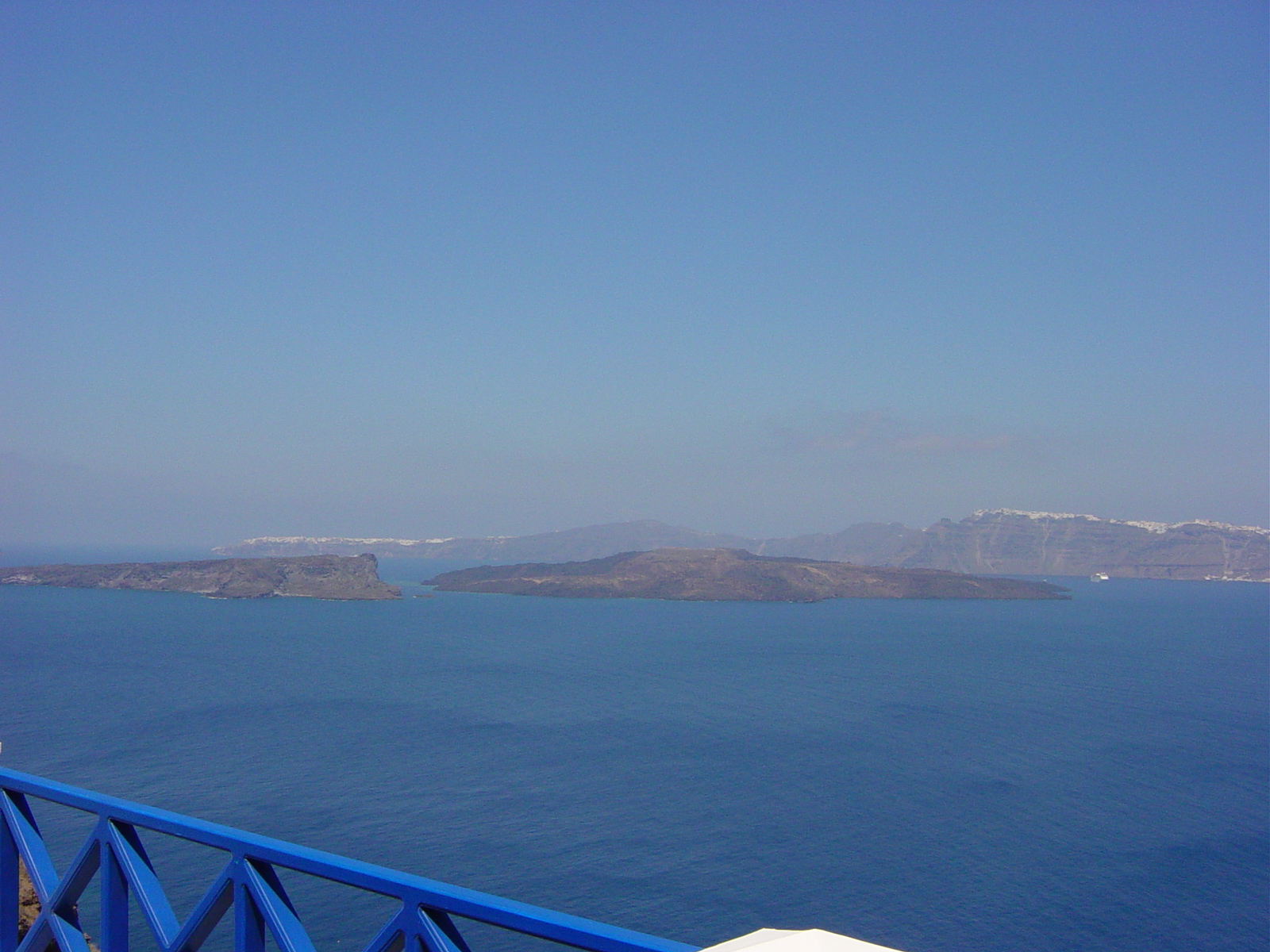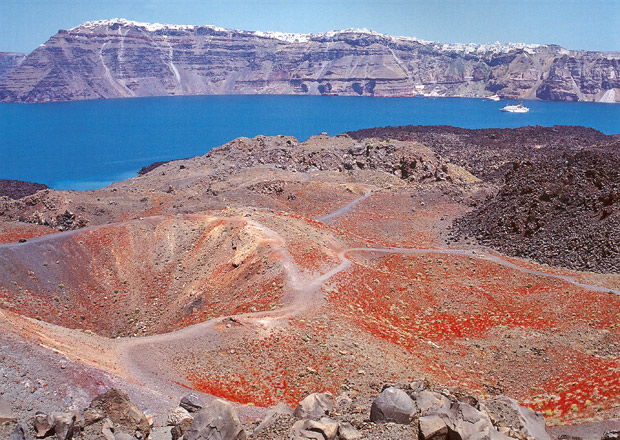
The volcanic islands Palea and Nea Kameni seen from Akrotiri
Palea Kameni island was shaped hundreds of years after the Minoan eruption and nowadays it is an uninhabited island. Taking into consideration its morphology, it must have been much larger in the past and Palea Kameni must be just a small part of an island that does not exist anymore. The rest of this island was obviously disappeared in the bottom of the caldera either in early centuries AD or in early Medieval Age. What is more, the vegetation, the various lava kinds as well as the erosion and decay degree of the rocks show us that the island consists of parts that date back to various ages.
The most ancient part of Palea Kameni, 103 meters high, which was probably created during two stages of explosions, is the largest one and it curves to the south. Its ground consists of deep fents. The newest part of the island is totally different than the ancient one. It is smoother and it consists of lava masses which are black, big and glassy. There is a small lake in the centre of Palea Kameni island which is connected with the sea through underground routes. There is a church devoted to Saint Nikolas and a small port on the northeast side of the island.
Nea Kameni
Nea Kameni is the newest volcanic island of the caldera. It was created in 1707 and it consists of lava, ash and sinter. Its crater is called Georgios and it is located on the highest point of the island, 103 meters.

Nea Kameni Santorini volcano
The northern cove of Nea Kameni can be seen from a far distance thanks to the impressive color of the sea water at that area. A thick layer of clay at the bottom of the sea which is composed of volcanic elements (medals) is the reason for which the water has turned to red. The cove is known as Kokkina Nera and it has been named after the red color of the water. Visitors usually swim in the cove and enjoy bathing in the clay that is considered to be sanatory.
